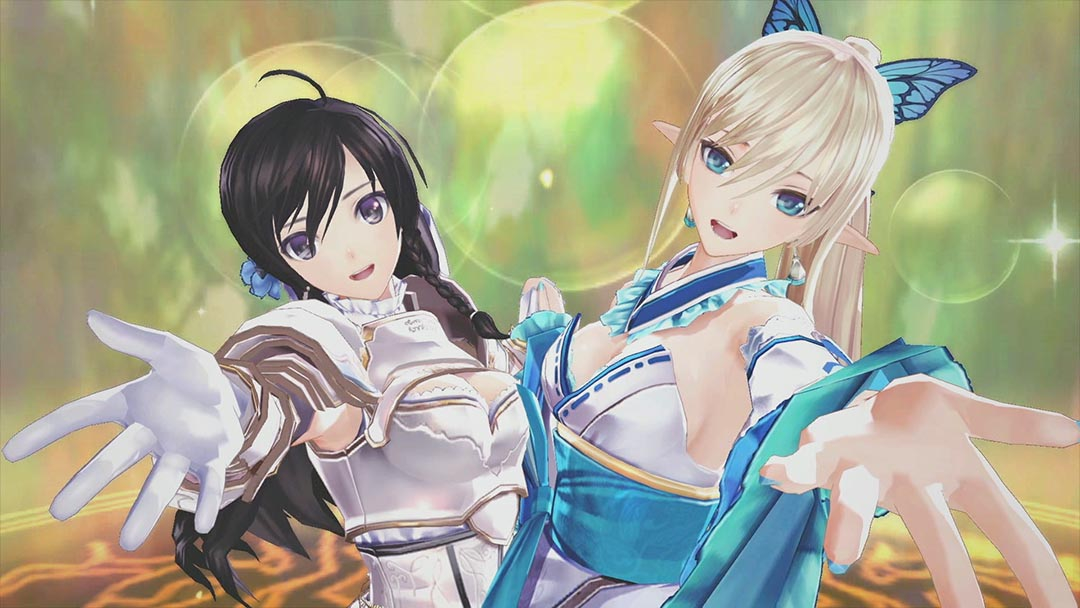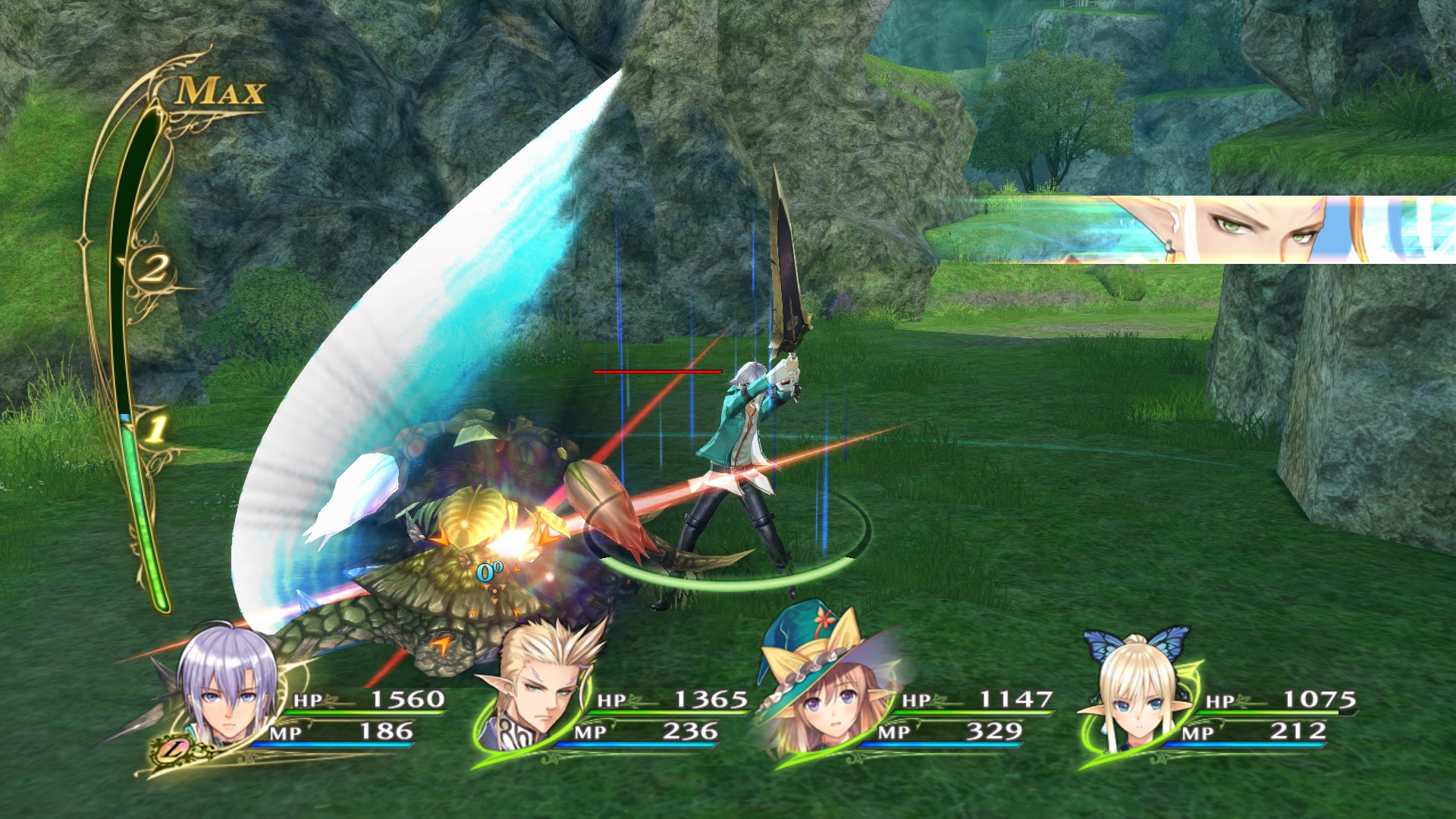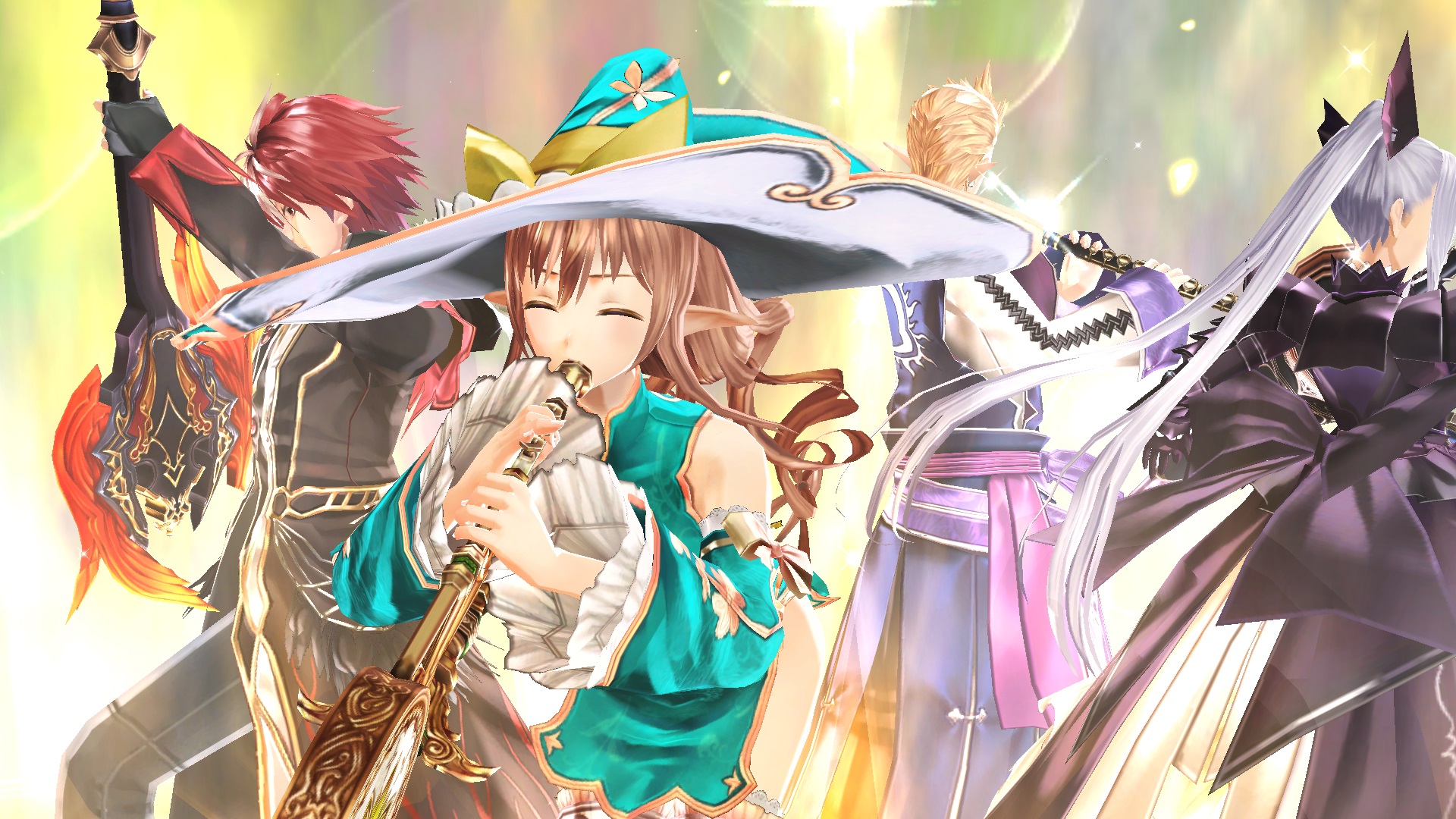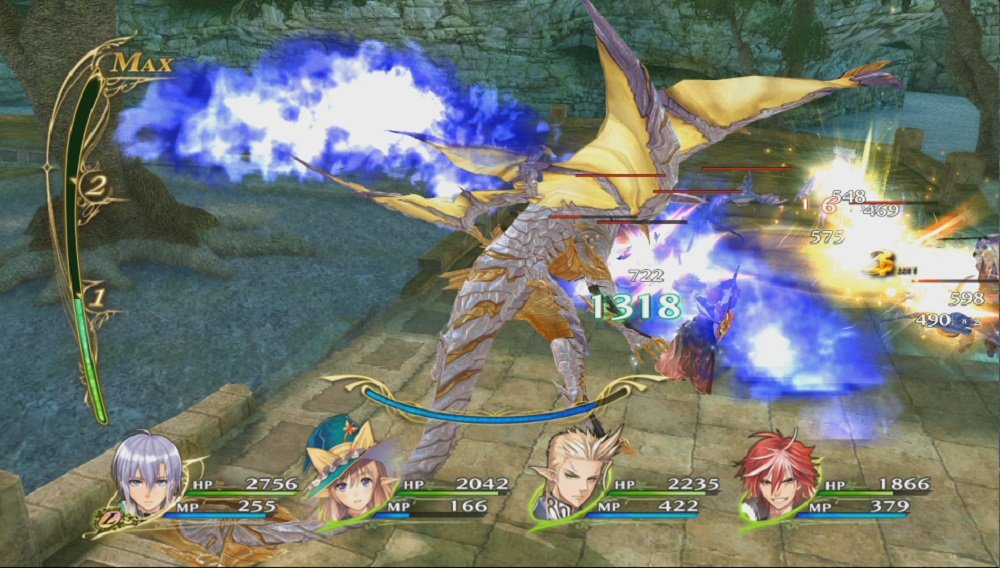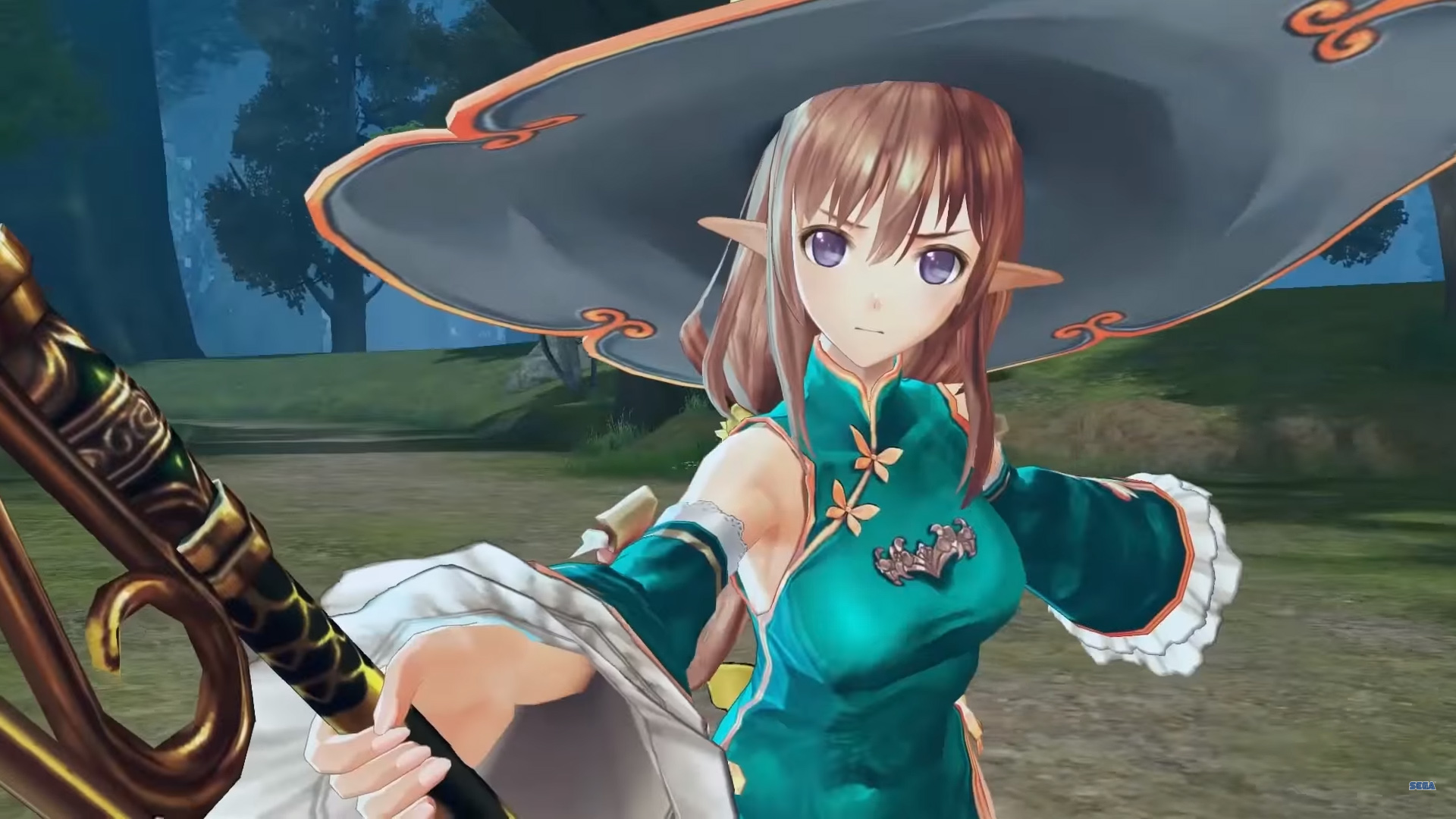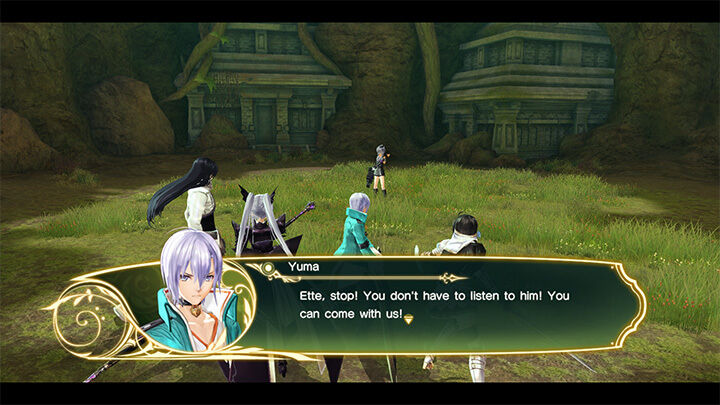The Shining Force series. The first of the series was originally release back in 1991 on the Sega Mega Drive and since then has branched off into several different genres and games. Originally released in 2014 on the PlayStation 3, Shining Resonance Refrain is a remaster of the original game that comes complete with all the DLC, bells and whistles of the original game. It has been ten years since a Shining series game has been released outside of Japan. Does the series still hold the magic that was present in the earlier titles?
Shining Resonance Refrain
Publisher: Sega
Developer: Media Vision
Platform: PlayStation 4 (Reviewed), Xbox One, Nintendo Switch,
Release Date: July 10th, 2018
Players: 1 Player
Price: $49.99
Alright, before I even get started on this review, I need to make one thing clear: Shining Resonance Refrain contains all the DLC from the original game. This includes all the DLC costumes originally released. Some of these costumes are risque. My personal favorites were the maid costumes for each of the female characters.
I wouldn’t be surprised if some of the more.. puritan outlets out there make a big stink about this in the coming weeks once they put down the walking simulators and try something new out. Personally, I love maid outfits, so all through my playthrough, everyone wore their maid costume. Is there anything better than battle maids taking down giant dragons?

Speaking of taking out giant dragons and other beasties that threaten the kingdom, Shining Resonance Refrain gives players several different tools to accomplish this. SRR plays very similar to other action RPGs, namely, the Tales of series the Ys series to an extent. There are 3 main forms of attack: Normal attacks, Break attacks, and Force attacks.
Almost every action a player takes in combat, sans moving and using force attacks, will consume some amount of AP, or Action Points. The game never really tells you how many AP each action takes, but there’s a small meter around the controlled character that will diminish as you attack, dodge, block, or use break attacks.
Despite most actions using up AP, the AP gauge refills fairly quick and will continue to refill when you use magic or techniques (force) attacks. The games tutorial even tells you that a good strategy to utilize is to attack till the AP is depleted and mix in force attacks till it refills.
Generally, combat will revolve around mixing up regular, break, and force attacks. Regarding break attacks: they are generally the characters special attack and the game will give you a brief tutorial each time a new character joins the roster, detailing a bit about their break attack and generally what their force attacks will look like.
Yuma has a break attack that allows him to lunge a short distance and knock down smaller enemies. One of his force attacks deals more damage to downed enemies. He will also eventually gain access to regen type buffs and elemental buff force abilities. Each character will have a similar type of organization between their normal, force, and break attacks.
Force abilities, either martial techniques or magical attacks, of course, consume a set amount of MP when used. Attacking normally will regain a bit of MP with each attack. So even if you use all of your MP in a fight, going back to normal attacks will help you regain back that mana pool to help you keep attacking.
This is especially important for any character that uses buffing or healing force abilities, because this means that these characters aren’t useless once their mana pool has been depleted. Rest easy though, there are items you can use that will replenish MP if you need it.

Building upon the musical themes presented through out the game, there is yet another combat technique that players can utilize to help take down the evil denizens of the world: the B.A.N.D technique. After playing for a bit, the game will unlock this nifty little feature. Each player character, either right off the bat or through the storyline, will use a weapon called an “Armonic”.
They are part weapon, part musical instrument. Agnum, one of the main characters, uses a weapon that is part electric guitar, part ax. Another character uses a lance that is also an oboe. However, during battle, once this mechanic is unlocked, a gauge will appear on the left side of the screen.
There are 3 levels on this gauge and once at least level 1 is filled up, by pressing R1 on the controller, the player will be able to choose a song from a list that grows in length during story progression and by completing different quests. Each song will have a different effect based on who is chosen as the lead for the B.A.N.D session.
Some songs will increase critical hit chances. others will decrease damage taken, and so on. The B.A.N.D mechanic also has one final aspect that is incredibly important story wise: subduing the Shining Dragon if it enters berserk mode.
The Shining Dragon, beyond it being a driving force behind the narrative of the game, also happens to be Yuma, the main character. Early on in the game, Yuma will unlock the ability to transform at will into the Shining Dragon, increasing his combat abilities drastically.
The downside to this powerful ability is the fact that the transformation constantly consumes MP and if the player tries to attack while low on MP, the Shining Dragon may enter a berserk state, attacking friend and foe alike.
However, if B.A.N.D is used while the Shining Dragon is in the berserk state, it will be snapped out of berserker mode. Additionally, while B.A.N.D is active, the Shining Dragon will not enter berserk status. The combination of these two aspects of the game offer up a lot in terms of extra strategy for players to utilize.
Beyond all this in terms of combat, Shining Resonance Refrain has more to offer in terms of building your characters and increasing the bonds the various characters share together. In terms of character building, remember that just about every character uses an Armonic.
Each of these weapons is also a musical instrument, remember? After a certain point in the game, players will be able to “tune” these weapons, allowing players to focus on certain aspects of the character in question. Take Yuma for example, one of his tunings allows for quicker attacks.
One of Sonia’s tunings will add extra strikes to her attacks. Each tuning also has a bonus to either Attack power, Magic power or B.A.N.D., so which tuning you choose will not only impact how your character acts in battle, but also which stats the player chooses to emphasize for that specific character.
Shining Resonance Refrain also features a bond mechanic, which is displayed through different titles each character possesses, as well as through a minor dating mini game. Depending on the different title the player places on the character, they will interact in battle differently with other characters.
The maid costume, for example, unlocks a title for each of the girls and if that title is placed on more than one character, they will use “jealously” attacks and heals, which also have negative side effects when used. You can also increase the bond between characters by inviting them on midnight talks, which can lead to date nights between Yuma and the chosen character.
Unfortunately, SRR suffers a bit from being an RPG of the semi-modern era. While the game does look fantastic, it does have a few draw backs. As seems to be the trend, the Kingdom of Astoria, more specifically the city of Marga, will be the main hub that the player travels to and from over the course of the game.

I’m generally not a big fan of this design decision in games. I much prefer a larger world that the player travels around without the need of a “base camp” to constantly return to. This is mostly because, as in the case of SRR, you will constantly be retracing your steps through more and more familiar locations close to the main hub.
Eventually, you will find yourself just running through these areas completely ignoring them and the enemies found therein, even if the enemies do scale in level as your characters do. This is mostly because even after the first few levels they won’t pose much trouble to your team.
There is a fast travel mechanic back to Marga, but you will be running back and forth a lot. It’s an unfortunately popular design choice and holds SRR back a bit in terms of being truly great.
Musically, as should be expected, SRR shines. As per usual, I will just say that the basic sounds flow and meld together so that the player eventually forgets that they are even there. This isn’t a bad thing by any means. When a games soundtrack just flows naturally and sounds great, it shouldn’t be jarring or something that the player notices every moment of game play.
As the major songs really stand out there, music plays a very important role in the story and gameplay of SRR. There are several tracks that play throughout the game that take center stage when you use B.A.N.D (pun totally intended) that are just incredibly catchy and fun to listen to.
Besides that, several characters are musically inclined and you will be treated to their songs if you invite them on enough private talks, dates, and do quests for them. Kirika has a very lovely song that plays a very important role in the main story.
However, there were a few times where the looping on the music was a bit off and there were moments of silence before the music suddenly kicks back in. This was another minor disappointment that kept SRR down a bit in terms of its overall presentation.

Finally, the story. You’re presented with a bit of a generic story to be perfectly honest. It focuses on a lone kingdom beset upon by a seemingly evil empire, an ancient power that has the potential to change the course of a war, a the young man afraid of his own power, and a princess that will do anything for her people.
Honestly, I had a bit of a Breath of Fire vibe going on when I first started playing. This was mostly because of the slight similarities between Ryu and Yuma, both of which being able to turn into dragons fairly early in to the storyline. However, there are things that will keep the player hooked on their system of choice through a somewhat generic story.
The characters are interesting and the dialogue is mostly organic and never really forced, nor does it have the saccharine tones that other JRPGs seem to suffer at times. I thoroughly enjoyed the different scenes where the different characters would interact with each other, especially lots of the scenes with Agnum in them, even if his dialogue was sometimes out of place.
At one point, he says that after what Sonia did for Yuma, she deserves a fist bump at the very least. This felt a little out of place in what is supposed to be a kingdom based off of a medieval setting, making me question if it was a translator having a bit of fun.
There is a secondary mode available right from the start that changes up the normal story a bit, and that’s Refrain mode. I won’t go in to much detail here, because it does change a lot of things up and really should be played once the player has completed the main story at least once.
It does add a lot the play time and also offers up a different view to the various characters. Beyond the difference in the story, certain characters are available right off the bat that aren’t normally available in the main game. It is definitely worth your time and effort to check out this extra mode once you complete the main story.

All in all, Shining Resonance Refrain is a great game for those looking for a fun experience to scratch that JRPG itch. There are a few issues here and there, between some antiquated design decisions showing the relative age of SRR, to the music issues, and the fact that the game stutters at times even on a PlayStation 4 Pro.
The game is very fun to play, the music is enchanting and the combat never really becomes a chore with all the different options available to the player. Yes, SRR has some issues, but they are for the most part fairly minor. The game doesn’t take too many chances with the story so it may fall flat to some, but there are enough side missions, dungeons, and character development options to keep fans of the genre playing for some time.
Shining Resonance Refrain may not go down in the annuls of gaming history as one of the best RPGs ever, but is by far one of the most solid RPGs we’ve seen in recent years. If you are a fan of the genre and want something to sink some serious time into with a great cast of characters and interesting lore, you would be doing yourself a disservice by skipping out on Shining Resonance Refrain.
Shining Resonance Refrain was reviewed on PlayStation 4 Pro using a review copy obtained by Niche Gamer. You can find additional information about Niche Gamer’s review/ethics policy here.
The Verdict: 9
The Good:
- A solid action-based JRPG
- An interesting world with a well crafted lore that will draw players in
- An OST that blends well with the game and becomes a major aspect of the game and story together
- Interesting characters that the player can become attached to
- Battle. Maids.
The Bad:
- Slow down and music looping issues that really should not be present on current gen systems
- A somewhat generic story that could be disappointing to some players
- Obviously a previous gen game that has been prettied up
- Basic enemies become a cake walk with some bosses being much tougher than the area they are fought in
